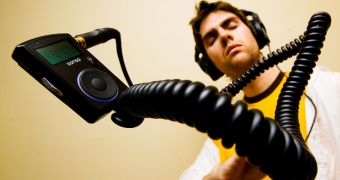The new legislation initiatives, which seek to impose a decibel limit on all new, personal music players, could be unnecessary, a new study shows. It would appear that, overall, the rate of hearing loss in the population is dropping rather than increasing, despite a surge in the usage of personal music devices such as mp3 players. The new research, which is the end-stage of a long-term investigation on the issue, shows that the massive improvements that have taken place in the world in the past 50 years, such as the decrease of the noise level people are subjected to at work, are far more important than the ill-effects caused by the rise in popularity of Walkmans, mp3 players and Bluetooth headsets.
The investigation has also delivered a series of counterintuitive numbers related to an individual's chances of suffering from hearing loss during his or her lifetime. The work has established that, for every five years a person was born later in the 20th century, their risk of suffering from hearing loss diminishes by 13 percent (for men) and by six percent (for women). One of the main factors that favored this drop was an improved overall level of public health, of which the reduced workplace-noise exposure was part. When looking at the general population, the rise of mp3 players and other devices is insufficient to offset the massive improvements that have taken place over the past half century, Wired reports.
“Because many people think that the world is getting noisier and noisier, they think that the prevalence of hearing impairment might increase. But the prevalence of hearing impairment is decreasing across the generation,” University of Wisconsin-Madison (UWM) population health scientist Weihai Zhan says. The new work was conducted for 15 years on 2,000 residents from the town of Beaver Dam, Wisconsin, a small city located between Milwaukee and Madison. The participants subjected themselves to periodic screenings, three of them, at five-year intervals, researchers explain. Details of the findings appear in the January issue of the American Journal of Epidemiology.
On the other hand, authorities in the European Union believe that young people are exposed to a high risk of losing their hearing, on account of loud mp3 players. “It is easy to push up the sound levels on your mp3 player to damagingly loud levels, especially on busy streets or public transport. The evidence is that particularly young people – who are listening to music at high volumes sometimes for hours each week – have no idea they can be putting their hearing at risk. It can take years for the hearing damage to show, and then it is simply too late. These standards make small technical changes to players so that by default, normal use is safe. If consumers chose [sic] to override the default settings they can, but there will be clear warnings so they know the risks they are taking,” the EU Consumer Affairs Commissioner, Meglena Kuneva, said a while back.

 14 DAY TRIAL //
14 DAY TRIAL //